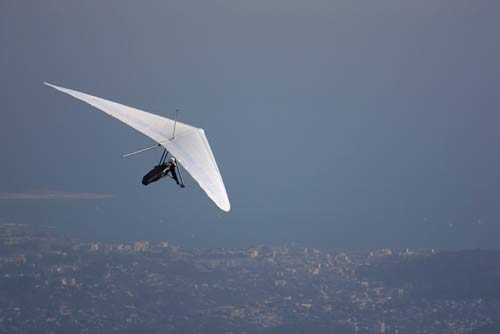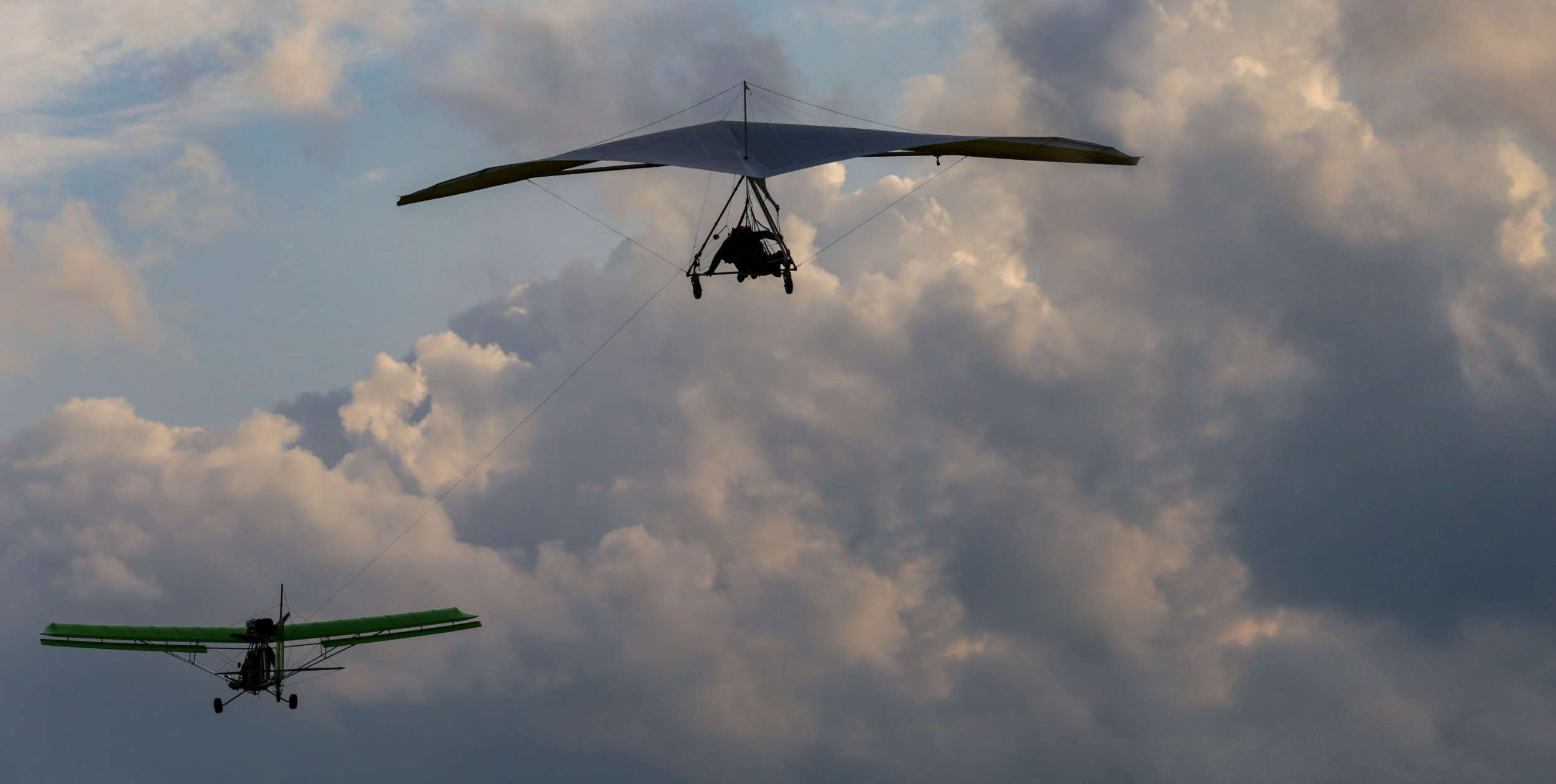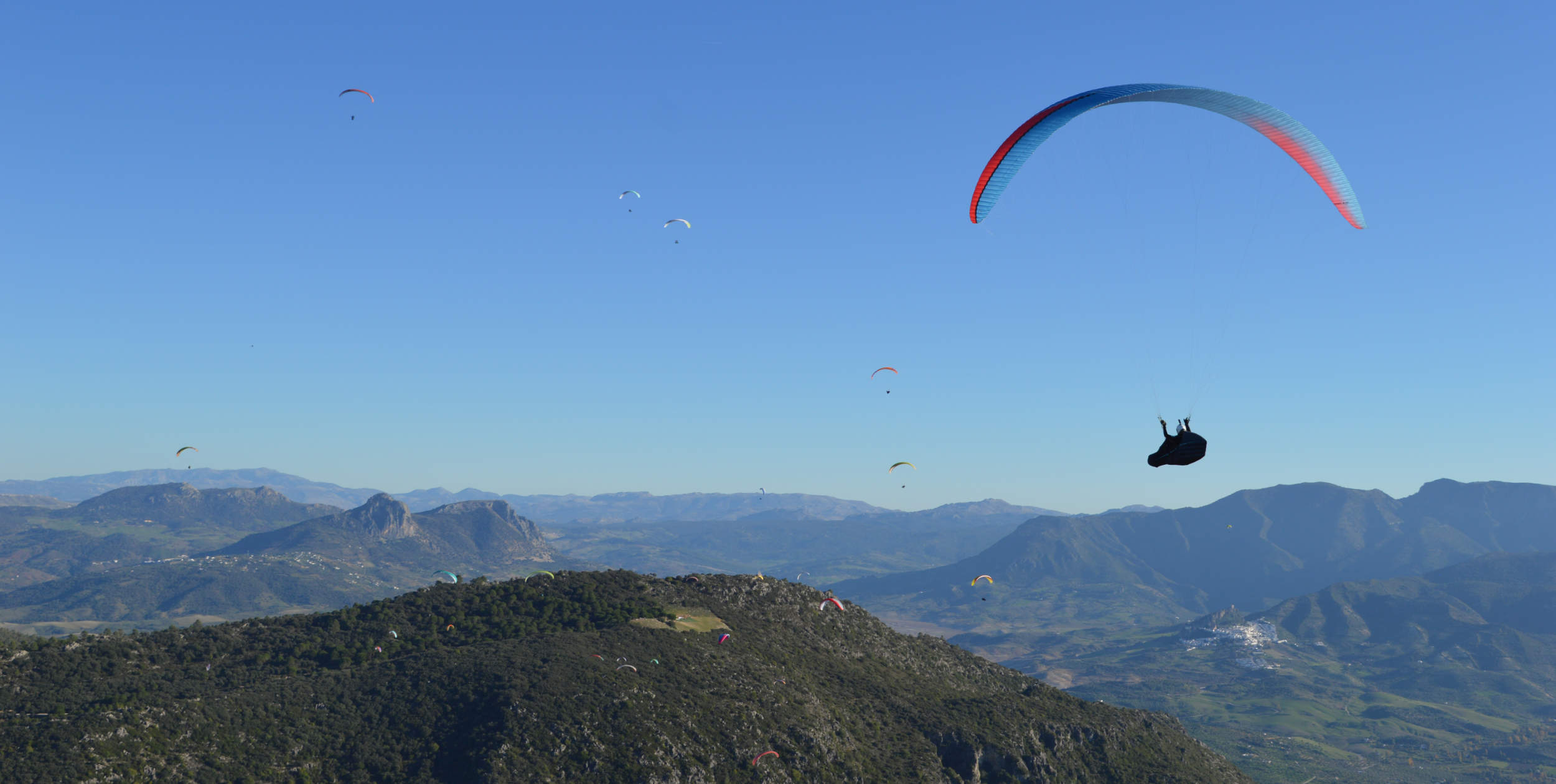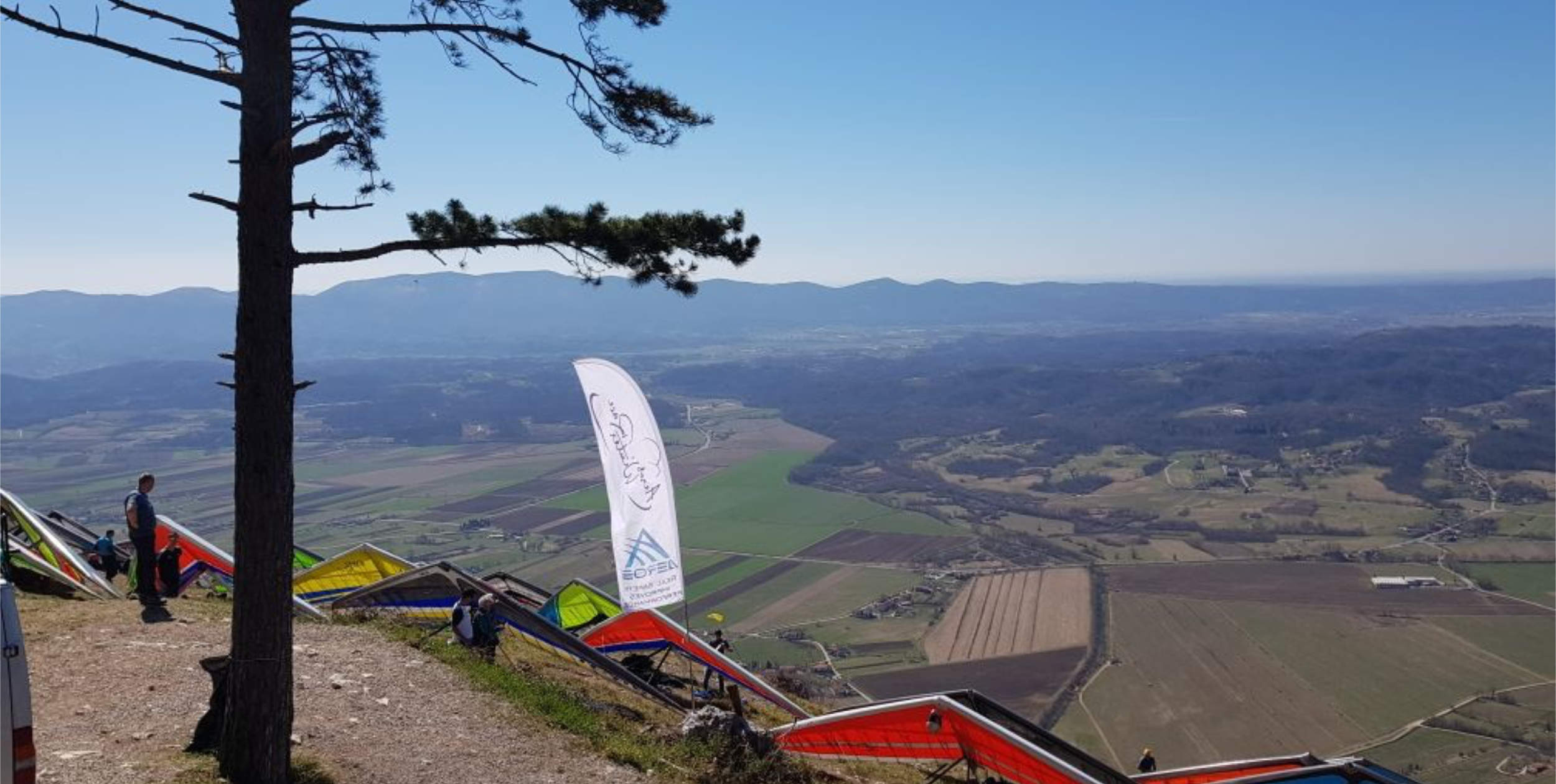The following was posted by Radek Bares on the Oz Report, and is intended to open a discussion into how high level hang gliding competitions can be improved. He is very keen to hear the opinions of other pilots, particularly those with high-level competition experience – you can give yours in the Comments section below.
I’d like to point at quite a serious problem that I think occurs in every competition we fly and that is the group flying. The way the tasks are set up today (the fact that most pilots take one start gate, or the maximum of two different start gates and then fly together) encourages people to fly in groups, stay passive and take advantage and go for ‘real competition’ only at the last thermal of the task.
If we look at sailplane comps, we can make the tasks much more sportive, competitive, individual and interesting. It’s high time to change our approach to competitions. Strong individuals have almost disappeared, as the current way of evaluation can’t appreciate them. We need new types of disciplines and new ways of thinking about the tasks.
The current tendency to “stay passive in a group as this minimizes the chance of a mistake” should be changed into “how to do it better than the others and to gain advantage this way”. Otherwise, the competitions turn into boredom for all the pilots.
I think that it is important to agree on what is the main goal of a hang gliding competition (including the Worlds). I am persuaded that the results of a competition should reflect how the pilots are able to use the natural conditions and their gliders to fly a given task. I mean how particular pilots are able to do it, regardless of how much support they receive from the group they fly with. Besides, it is important to give the pilots the opportunity to learn as much flying skills as possible.
Nowadays, I mostly see one to two gaggles of pilots, in which most of the pilots have little or no idea why they fly in a particular direction (the only reason to do so is to follow the group). The current way of setting the tasks encourages pilots to keep contact with the main strong group of pilots. If someone has an individual plan or idea, there is a great chance of being less successful than the main group. This only results in a struggle for positions within this group, taking no risks and the real competition is postponed to the last kilometers of a task.
Only a few people occasionally go for an individual plan (Manfred, sometimes Gerolf, Atilla, Johny). Behind them, there are pilots (let’s say 10th to 50th place) who would individually achieve only a part of what they are able to perform when sticking to a group. That’s why I am persuaded that we need to come up with new tasks that would push people for individual flying.
Moreover, we can’t forget the second key aspect – safety. The new tasks cannot raise the risks for pilots (compared to current situation). This means new tasks basically cannot force the pilots to create dangerous situations for themselves. There are multiple ideas about how to change today’s competition of two or three groups into a competition of sixty individual pilots. But this discussion is meaningful only if the top pilots join it as it is especially these people who can consider the proposals in a realistic way and who can tell what may help create the difference between the 1st, 2nd, 10th and 50th place – when the best pilots fly individually.
If the top pilots are interested to join the discussion, we can start thinking first of the crucial changes in our competitions since the use of the GPS. And I’d say that our sport deserves that. I don’t mean changing just the scoring patterns, that can’t be enough. I think of a complete change of setting the tasks as well as scoring. There are a few pilots who enjoy thinking about where to fly and why during the task, and I know that they are often followed by a group of passive pilots, who, not taking any risks, often finish on a better place than the pilots who go out in front and take the risks.
Competition flying can teach us and help us to improve, but only if we fly with a group of pilots, not in the group. The difference is crucial. If I fly with a group, it means that there are a few people around me, who fly individually, I make individual decisions too and I’m able to evaluate and to compare immediately who made a better decision and I can learn from that. On the contrary, flying in a group of pilots, I only copy others’ decisions, I don’t really have my own opinion and I can’t compare whether the group’s decision was the best one. The result – I haven’t learnt anything.
Well, how can we achieve a competition of individuals? By choosing those types of tasks that allow only minimal chances to create large groups of ten, twenty, or thirty pilots. Instead, if small groups of three to five pilots are formed, there is quite a good chance of top placement even for pilots flying individually. I mean, for example, sailplane tasks of the AAT type.
In these tasks there are waypoints (for example, two) with large cylinders (of several tenths of kilometers) and a minimal time (let’s say two hours). During the flight, the pilot must enter both cylinders and the aim is to achieve maximum average speed during the flight. Not the distance, but the speed is crucial here.
There is a minimal time of flight – two hours, but the pilot can fly longer. It means, the pilot must make the right decision about the weather in particular areas and make maximum advantage in these areas. Thus, there is more than one ideal track, and the starting field is dispersed.
Another possibility is to set a “classic” task via turnpoints, but including several start cylinders placed in a way not to give advantage to one over the other ones, with no start gates (free start time). No one will be able to monitor other pilots’ start times and start cylinders, therefore there will be no group tactic, the other pilots in my group may have different start times and they may be ahead.
Another possibility to prevent groups is to set a long (for example, 15 km) start line and again a free start time, thus, there is no unique ideal place of start. Similarly, if the goal is a line of several kilometers, this gives chance to several possible “ideal” tracks and the starting field may be dispersed again.
If this virtual goal line is placed six to eight kilometers before the ideal landing spot and if reaching this spot is rewarded with a bonus (number of points agreed previously), the result is that pilots will try to cross the goal line at 600 meters height and then reach the ideal landing spot (a safe place, with a windsock, for example, an airfield).
After the speed section there is no pressure on landing time. Numerous pilots will find thermals after crossing the goal line and heading towards the landing field. This leads to safe landing even if more people land at the same time. In this case there would be no more gaggles of pilots approaching to the goal line with maximum speed. Also, if I don’t have enough height to achieve the landing spot (and the bonus), I only losoe a few points (number of points agreed previously), unlike the current situation when I may loose hundreds of points if I don’t cross the goal line. Consequently, I’m much less motivated to risk a hazardous landing and a possible injury.
The landing bonus must balance with a potential scoring bonus in case I would “score” those 600m of height necessary to achieve the ideal landing spot, turning them into the ‘speed over the goal line’ bonus and landing just behind the line. The “ideal landing spot” bonus must be a little higher.
There are other options to create new tasks, however quite difficult to explain only in words, without a sketch. Also, the scoring system may be changed and made easier. If the above mentioned way of crossing the goal line brings higher safety, we could use the scoring for placement (like in motorsport – for example 50 points for the 1st place, 45 for the 2nd etc, plus the landing spot bonus). This would result in the fact that it would be uncomfortable for the top pilots to come to goal in a large group (what if, during the final glide, they were pushed by other pilots to lower positions – the loss would be important).
Today, if people cross the goal line close one behind the other, the loss of points is minor. Also, if nowadays the pilots behave this way during the whole competition, there is a high chance of good final placement, so there is no motivation to leave the group and fly individually. This would be changed.
Another way to make our competitions more interesting is to create something like individual “intermediate” bonus on the track, for crossing a line (of tenths of km) somewhere behind a presumed difficult spot on the track. The first X pilots would receive bonus points for crossing this line as a reward for their “active” approach. There may be different types of bonus awards, even in one task – like in road bicycle racing – to help to “move” the race and to split up the peloton. They are struggling with a similar problem to ours.
• Got news? Send it to us at news@xccontent.local.
Subscribe to the world’s favourite hang gliding and paragliding magazine








